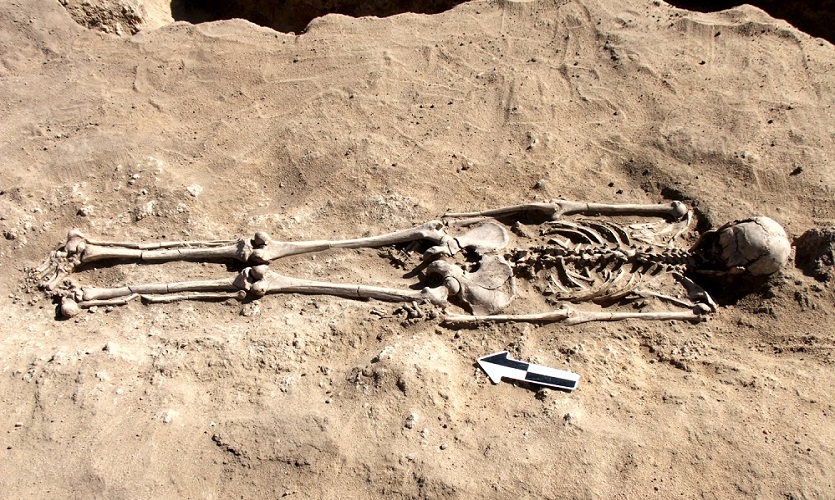Study 'solves mystery' of shifts in physical appearance of ancient Nubians

The shift from hunter-gatherer to farmer likely explains evolutionary jumps in appearance amongst many ancient peoples, says a new study.
Anthropologists have long argued over the extent to which ancient populations are related to modern and in identifying the physical threads that link them over time.
Now a new study in the southern Nile region called Nubia supports the idea that this lifestyle transition led to significant physiological adaptation, strengthening the view that many populations did not die out but changed.
The key finding is that two distinct hunter-gatherer populations of the Pleistocene period lived in this region, but only one was ancestral to later peoples.
Changed diet?
Analysis of more than 1,000 human remains found strong genetic similarities between hunter-gatherer Nubians with East African ancestry and later farming peoples—who were the contemporaries and latterly rivals of Ancient Egyptians.
Joel Irish, professor of bioarchaeology at Liverpool John Moores University said: “The established school of thought is that most humans look different over the ages worldwide because they changed diet, but our Nubian evidence suggests it is also because some supposed ancestors may not be ancestral at all.”
Dr Irish and Donatella Usai of Centro Studi Sudanesi e Sub-Sahariani ONLUS, Treviso, compared morphological changes in teeth of skeletons from cemeteries at Gebel Sahaba in Egypt (then Nubia) and Al Khiday in Sudan (southern Nubia), dating 12,000 to 14,000 years ago, with Neolithic and later human samples.
The pair examined traits of the teeth--which are highly genetic in make-up, so can be used in place of DNA, which is destroyed by heat and time.
Ancestors
Their findings, published today (Wed, June 9, 2021) in Proceedings of the Royal Society B, suggest that the Al Khiday hunter-gatherers were likely ancestors of the Nubian farmers. This is contrary to previous thinking that it was the Gebel Sahaba nomads (found to have West African origins), who in reality contributed little or nothing genetically.
“Both early populations likely moved to the region in the last Saharan ‘Green’ period (15-9,000 years ago), when the desert was comparatively well-watered and favourable for human passage before desert conditions returned; yet only one passed on their genes,” added Irish.
“There are marked morphometric changes in skulls and teeth of Nubian skeletal remains before and after this period, but our evidence suggests continuity of one population.”
‘The transition from hunting-gathering to agriculture in Nubia: Dental evidence for and against selection, population continuity, and discontinuity’ is authored by Irish and Usai and published in Proceedings of the Royal Society B.
IMAGE: showing the unusual burial positioning (i.e., face down) of the Al Khiday Late Palaeolithic individuals. Late Palaeolithic burial showing prone, extended body position indicative of this period at Al Khiday. Photo CSSeS.


